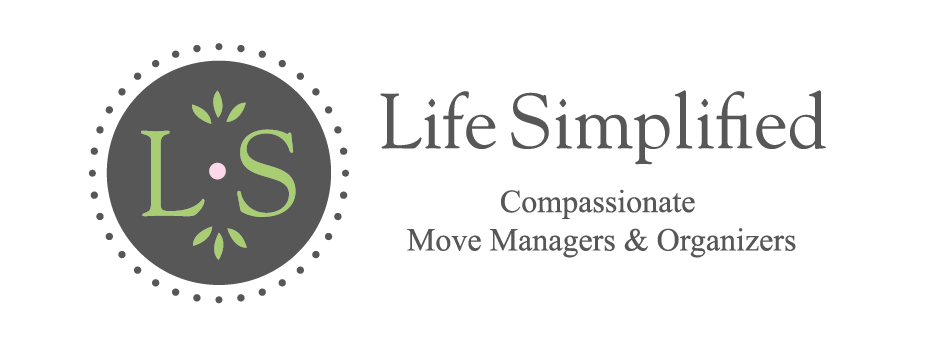What I've Learned In My Years of Organizing
Happy Anniversary to Life Simplified
When I started my business three years ago August 28, 2013 (wow where did the time go!!)
I never imagined the roller coaster journey that I would be on. It has been such a worthwile and never ending learning experience. I’m happy to share. Below are the Top Ten Things I’ve Discovered on this Three Year Journey…..
- People having an excessive amount of empty organizing products (bins, containers, bags, or anything else that is used to hold things) causing clutter These products laying around not being used can add additional clutter to an already cluttered mess. Organize 1st then purchase organizing product.
- People like to use the word HOARDING or HOARDER, not realizing the psychological harm it can do to an individual. Just because someone might have a lot of clutter or might be disorganized doesn’t make them a Hoarder. Clutter can be created by an individual having a very busy lifestyle, it can be situational disorganization or chronic disorganized. The definition of Hoarding/Hoarder is: the compulsive purchasing, acquiring, searching, and saving of items that have little or no value. The behavior usually has serious effects—emotional, physical, social, financial, and even legal. A hoarder has persistent difficulty discarding or parting with possessions such as trash, newspapers, magazines, paper and plastic bags, and cardboard boxes. Is suspicious of other people touching possessions. Has obsessive thoughts about possessions: - Fear of running out of an item and needing it later. - Checks the garbage to see if an item was accidentally discarded. Also he or she may have - Loss of living space inside the home (no place to eat, sleep, or cook)
- Online buying and wholesale stores can lead to excessive buying which can lead to an individual becoming disorganized and cluttered. THINK LESS IS MORE
- Busy lives, no routines, and disorganized home = stressed out children, which can equal to children having multiple meltdowns, backtalk, disrespect, and misbehaving.
- Many people are afraid to ask for Help or too embarrassed to ask for help. Clutter= stressful, loneliness,depression, loss of time & money. HELP= success, happiness, extra time, and freeing!
- It’s not as bad as one would think. Many people describe their clutter worse than it really is when speaking with me on the phone. As organizer I provide patience, compassion and experience to get the person through the process. You can tackle disorganization one pile or one small corner at a time.
- Everything needs a home. Before you decide to buy more things decide where these items will go. Put systems in place to help maintain organized spaces.
- Time management =success in staying organized. Take 5-10 minutes every day p keep things organized. Take 30 minutes a week to see if there are things that can be eliminated/tossed away. Take 1 hour a month to organize a different room in your house/office/garage.
- Do Not Throw Out Anyone Else Stuff Without Asking! This is especially true for a hoarder. You might think you’re helping but you are actually causing mistrust and resentment.
- Meeting so many fabulous and wonderful people. Having amazing and appreciative clients and family members of clients! I love to watch my clients grow. Listening to each client unique stories.
Thank You for All the Amazing Years!

Don't stress! Follow these helpful hints to stay organized and enjoy your time with family and friends. Hosting Holiday Meals Ask your guests to help Lists! Lists! Lists! (grocery, menu, etc.) Remember the batteries Use disposable pans & Plates as much as possible Consider Grocery delivery Service Also, support any local farmers markets or farms by buying any produce from them! Stay focused, Hydrated & keep that protein level up! Have 10 quiet minutes? Wrap a present! Grab a glass of wine Turn on a Christmas movie Be sure to have your camera ready but don’t forget to sit back & enjoy the moments Set the coffee to automatically brew. You'll love having a hot cup of coffee to start your day! Most Importantly... Enjoy this time with your family and friends . Yes, it can be stressful; yes, it can be overwhelming, but it can also be fun! Allow yourself to enjoy it - stress and all!

How long do you leave your holiday decorations on display in your home? We hear from a lot of people that they continue to enjoy their holiday decorations well into the new year . We’re all for squeezing every last drop of joy out of the season and we think you should leave your decorations up as long as you’d like! However, when the time comes to un-decorate, we highly recommend that you downsize holiday decorations: take the time to sort and organize them before you put them away. Always edit your collections before you store them. This concept is harder than it seems, but if you decorate your home for the holidays and still have more decor in storage, you may want to donate or re-home anything you didn’t display this year . If you’re ready to apply this principle, try this method: 1) Pull out ALL of your holiday decor and supplies at the start of the season. 2) Decorate your home and set up your gift wrapping area, holiday supplies etc. 3) Box or bag anything that didn’t make the cut this year for decor and supplies. 4) Retain any storage containers that could be useful to better organize the items you want to keep for next year. The pros recommend clear containers so you can see what’s in there! If you’re downsizing or short on space, consider: Choose unbreakable and easy-to-store options when you can. Fragile decorations that need a lot of protection take up a lot of space in storage. We know some downsizers who have chosen to go all-natural (as much as possible) with live garlands, wreaths, tree trimmings, floral arrangements, etc. so that there is less to store at the end of the season. You can always choose fewer areas to decorate , focusing on the spaces where you will most enjoy your holiday trimmings. When it’s time to store: Use the right container for the job . Specialty ornament containers may cost more, but they will protect delicate items. Consider off-site storage . We’re seeing more and more specialty storage solutions for small-space dwellers, including services that will pick up and deliver your holiday supplies on demand.

How do you decorate for the holidays? For many, transforming their home with elaborate holiday zeal is a seasonal ritual that lightens the mood and brings joy to the whole household. There are lots of ways to go crazy on the holiday decorations, but one of our particular favorites is the Christmas village . These table-top displays tend to grow over the years and can manifest as a full-on miniature town complete with tiny inhabitants going about their holiday errands. Collectibles advisor Charles Tinsley weighs in on What’s It Worth: Department 56. Department 56 Of all the versions of ceramic towns that pop up in American homes every December, the Department 56 Christmas Villages continue to be one of the most popular items in the Christmas collectibles market. The charming Department 56 ceramic pieces, decorated for the holidays and lit brightly behind their tiny windows, were the brainchild of Ed Banzinet , a talented designer who oversaw the Gift Import Department (Department 56!) of the Bachman Company in Minneapolis. The first Department 56 buildings were released in 1976. The Original Snow Village consisted of six pieces: four little houses and two churches. The Original Snow Village was based on an actual town near Ed’s home in Stillwater, Minnesota. Stillwater had a tradition of decorating the houses, stores and churches for Christmas with garlands, wreaths and bright lights. The first Christmas village set the character for the brand: highly detailed ceramic buildings that are brightly lit to create the look that originally inspired him. In the first two years of the collection, nine more pieces were added. These first designs in the collection remain the most highly prized by collectors today. A Focus on Popular Culture Like many decorative or seasonal collectables, Department 56 releases new designs every year, inspiring collectors to commemorate the years and the celebration of family milestones with new pieces. Department 56 enjoyed a popularity boost from an unlikely source: pieces based on the 1989 film National Lampoon’s Christmas Vacation . In the movie, Clark Griswold’s boss Mr. Shirley did not give Christmas bonuses that year, but did have a celebration in his large and well appointed home. This scene was the inspiration for the very popular miniature Boss Shirley’s House. The film inspired a whole host of buildings, characters and accessories, including Todd & Margo’s House. The Christmas Vacation series remains among the most popular and sought-after pieces. Over the years, Department 56 has released many other designs based on popular culture and holiday films, including “A Christmas Story” , many Disney characters, a vintage Harley Davidson store and even a miniature Downton Abbey . The greatest challenge for this particular collectible is that they are ceramic, and therefore fragile. The value decreases greatly if they do not come with their original box and packaging . Since they are usually associated with the holiday season, they spend most of the time in storage. They take up a lot of room which means collectors have to sacrifice valuable storage space in their homes. So, What’s it Worth? As is the case with many collectibles these days, the value of Department 56 pieces is not as high as it has been in the past , but they do continue to be highly sought after. Notable online auction sales in the fall 2021 include National Lampoon’s Christmas Vacation series . These designs remain at the top of the heap for collectors: • Todd and Margo’s House $2800 • The Department Store $500- $900 • Griswold Family Buys a Tree $375 The Dickens Village pieces are highly collected as well. In 2021 the top prices for pieces in this set were: • Kensington Palace $125 • Norman Church $220 • Dead Creek Village Mill $200 Smaller pieces in the collection such as “The Christmas Carol” may go for $40 to $50. Other sought-after designs include the Halloween Haunted Mansion ($800-$1000) and the Chick-Fil-A Dwarf House ($450). Common Designs Currently, the majority of the Department 56 collectibles are sold in larger lots, in their original boxes. Lots of 8-12 pieces may go for $200-$225 . Large collections of 75 or more pieces in their boxes may sell for as much as $1200 . If you love constructing a tiny village in your home for the holidays, and you have the space to store them, our advice is to continue enjoying your collection as long as you can! You could even scoop up some delightful additions to add a new neighborhood at a relatively low cost. When you’re ready to sell, you’ll probably do best to package them as a lot and sell them online or at a local auction house .

